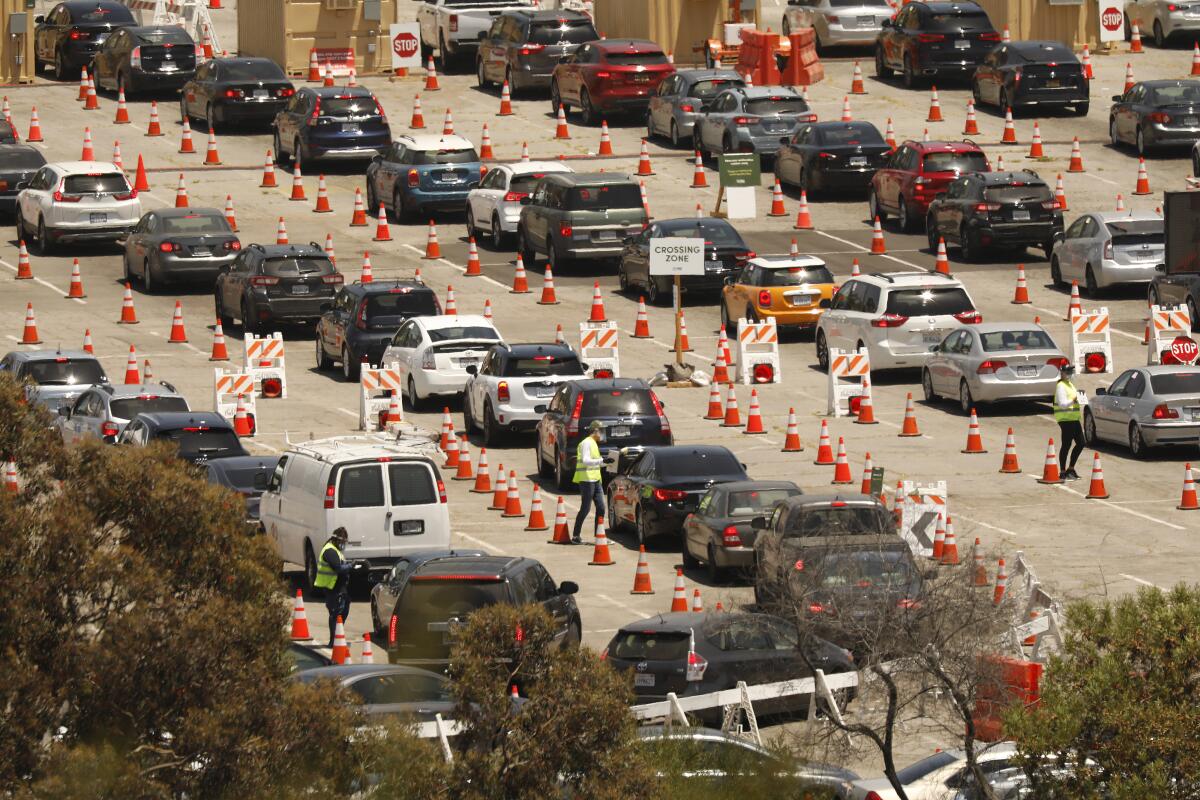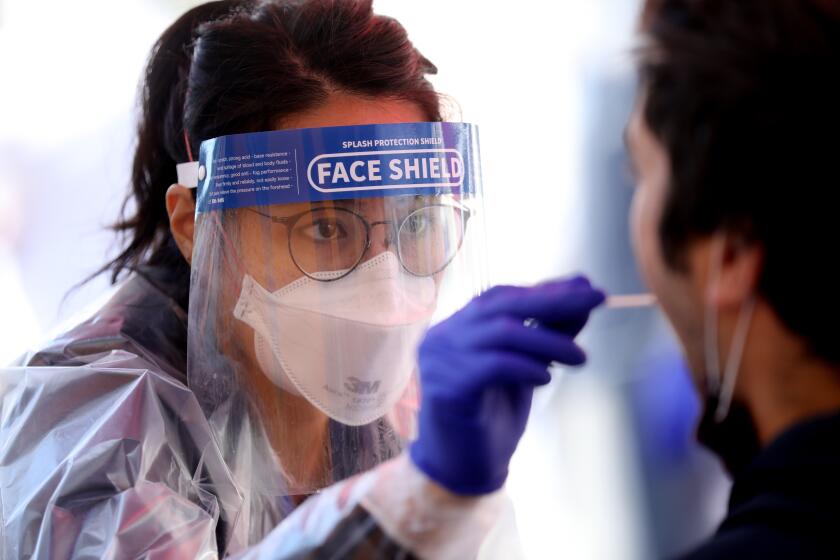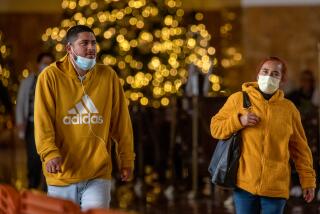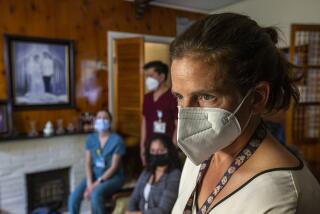Southern California suburban counties failing COVID-19 benchmarks for communities of color

A swath of California is failing to meet a new state health equity metric for coronavirus cases that’s intended to ensure counties are helping poor communities of color, which are disproportionately affected by the virus.
That failure is creating new barriers to further reopening of the economy.
At least 12 counties, including four in Southern California, aren’t meeting the new metric, which is designed to ensure that test positivity rates in the most disadvantaged neighborhoods don’t significantly exceed a county’s overall rate. It measures the seven-day average positivity rate of a county’s lowest quartile based on the California Healthy Places index against the infection rate countywide.
“We all know that low-income Latino, Black and Pacific Islander Californians have been the hardest hit in this pandemic,” acting state health officer Dr. Erica Pan said during a news briefing this week. “Our goal is to reduce disease transmission in all communities, especially those most at risk.”
Data provided by the California Department of Public Health show an excessive gap in several counties, including Orange, Riverside, San Bernardino and San Diego.
And every disparity has the potential to place the areas in two different tiers under the state’s latest four-tiered, color-coded reopening blueprint.
A county must meet a tier’s threshold for coronavirus case counts by population size, in addition to the rate of positive tests. If requirements for only one of those metrics is met, stricter guidelines apply. And if a county’s overall positivity rate differs significantly from those in its most disadvantaged neighborhoods, it could be held back from reopening.
For example, Orange County has a seven-day positivity average of 3.2%, a number that aligns with Tier 3 — which allows for a wider reopening of the economic sector. But in the county’s lowest quartile, the positivity rate is 6.6%, which requires the county to remain in Tier 2.
California establishes a reopening requirement for counties: Reduce infections in communities where the poor and people of color live.
The numbers were published Tuesday and pertain to county data from the previous week.
Other counties failing to meet the new health equity metric include Contra Costa, Fresno, San Francisco, San Joaquin, San Mateo, Santa Barbara, Shasta and Sonoma. Data are currently unavailable for a handful of other counties.
No county has yet to be held back from advancing through the reopening tiers solely because of the health equity metric. But the requirement will force some counties to deploy more resources to their hardest-hit communities.
San Diego County recently contracted with multiple nonprofits that work with at-risk groups and has expanded testing in communities with an increased number of COVID-19 hospitalizations and deaths.
“Even though we’ve done all of those things, and we will continue to do those, we will always search out more opportunities to try and address the equity issues and try and help those communities who are most impacted,” County Supervisor Nathan Fletcher said this week.
Some officials have pushed back against the metric. Orange County Supervisor Don Wagner referred to the requirement as “virtue signaling,” arguing that it punishes counties that have already taken steps to address disadvantaged communities.
“The problem the governor says he’s addressing is not a problem in Orange County — it’s been addressed,” Wagner said, adding that he takes issue with how the metric is applied, implicating more communities than what he believes to be necessary.
But those in favor of the effort, who have pushed for the state to do more for disadvantaged communities, believe that the equity metric is the right approach.
“If we are in this together, we need to pay attention to what is happening in the Latino community and in specific ZIP Codes,” said Nancy Maldonado, chief executive of the Chicano Federation of San Diego County. “Either your life has not been touched by COVID at all, or your entire life has been devastated.”
Maldonado said reopenings have widely implicated disadvantaged groups. The Chicano Federation pressed Gov. Gavin Newsom to address communities that were not adequately resourced or did not have ample access to medical services needed to mitigate the spread.
“I think that right now, being aggressive is exactly what we need it to be,” she said.
In Los Angeles County, officials said Wednesday that the equity metric was not adversely affecting the county.
“L.A. County has one of the lowest equity measures,” Public Health Director Barbara Ferrer said. “What is standing in our way to advancing to a higher tier — the red tier — is that we continue to see more than the average of 700 to 800 new cases a day.”
Coronavirus cases continue to rise throughout the state. Though health experts say it’s too early to label the uptick a surge, the increase may keep some areas from progressing further in the state’s reopening plan. Already, two counties were sent backward on the tiered system.
More to Read
Sign up for Essential California
The most important California stories and recommendations in your inbox every morning.
You may occasionally receive promotional content from the Los Angeles Times.












